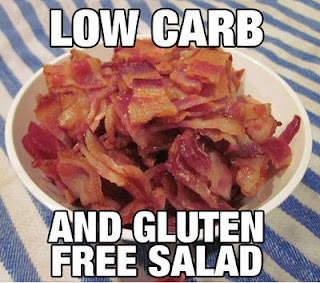Diet Trends Decoded
Today I’m wanting to talk diet trends. There are so many different kinds out there right now, I wanted to break it all down for you.
1. Paleo Diet
Paleo has grown in popularity by leaps and bounds. Supposedly it is based on hunting and gathering like in the good old days. So, anything you could hunt (meat and seafood) and gather (fruits and vegetables) are open to consumption. Dairy, grains, legumes, starchy vegetables (like potatoes – but aren’t potatoes a vegetable?), sweets and juices are not allowed. This diet may help you to increase consumption of fresh produce, but ultimately cuts out a lot of different foods (some that might help you better balance your micronutrient (i.e. minerals and vitamins) intake. You may need to look into taking supplements to help maintain optimal nutrient balance.
2. Juice Cleanses
Juicing refers to consuming only fruit and vegetable juices. The thinking is that with no pulpy goodness around, nutrients will absorb more quickly into the body. Juices may be a nice addition to an already healthy diet, but is very restrictive. Juice cleanses can cause a lack of macro nutrient intake (such as protein and fat – yes your body needs some fats to stay healthy!).
3. Mediterranean Diet
This is the only diet to include elements of holistic well-being. It recommends daily exercise, and sharing meals with friends and family. The diet part encourages high intake of breads and unrefined cereals, fruits, vegetables, fish, cheese and olive oil. It allows a moderate intake of wine (oh yes!), and little meat. There are no major restrictions to the Mediterranean Diet, and has actually been backed by science to help with long-term weight control and management. We like that it includes exercise and social well-being!
4. Ketogenic Diet
This diet was developed in the 1920s as a means to treat seizures (prior to anti-seizure medication becoming readily available). It is based on high fat and protein intake and eliminates carbohydrates. Without carbs, your body needs energy from somewhere and create ketone bodies in response to a lack of glucose (aka broken down carbs). Side note – glucose is your body’s main source of energy; your brain relies almost exclusively on glucose to function. Weight loss happens fast, but it is not sustainable. Without carbs, you are losing out on essential nutrients and fiber. This diet may be beneficial for those with a seizure disorder, but of course should only be recommended and monitored by your doctor.
So there we have it, 4 popular diet trends broken down. It is important to note that diets are not a “one-size-fits-all.” What works for one person, may not work for the next. Diets are usually based on trends, but maybe shifting our definition is the answer. The dictionary definition of “diet” is “the kinds of food that a person, animal or community habitually eats.” The key word here is habitually. A diet should not be a quick solution for weight loss. A diet should be all the foods we eat on a regular basis. Eating healthy and balanced meals is best. Lots of fruits and vegetables and a variety of other nutritious, healthy foods that complement them. Less processed sugars, such as soda pop and pastries.
If you are looking to make a change in your diet, it is best to contact a dietician, doctor or nutritionist so that they may monitor your eating habits. They can make recommendations based on your individual needs, and help you find supplements that work for you if there is a particular food or food group you can’t eat due to allergies.

